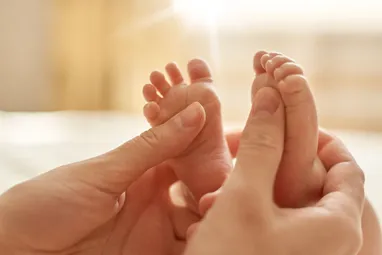Expectant mothers tend to carefully study information about newborns in order to prepare for an important event in their lives. However, even the most prepared of them may be surprised by some of the facts that we present below.
Children do not dream until they are two years old, since the brain has few accumulated images and concepts.
Babies are born without kneecaps. In fact, there is a kneecap, but its tissue structure is cartilaginous. Only after six months of life, the cartilaginous patella begins to turn into bone tissue.
For this reason, most babies crawl on their hands rather than on all fours. A study by Swedish scientists has shown that newborns can crawl on their hands. When the baby is placed on the mother’s stomach immediately after birth, he is able to reach the mother’s breast within an hour.
May babies are the heaviest born. Researchers found that babies born in May weighed an average of 200 grams more than babies born in other months.
To date, the largest baby is considered to be a boy born in 1955 in Italy, whose weight was 10 kilograms 200 grams.
Newborns don’t cry. Newborns do not produce tears immediately after birth because the tear ducts are not yet fully developed. In the first weeks of life, enough moisture is formed in the eyes just to keep the eyes healthy.
Babies usually start to cry for the first time at 3-4 weeks of age. However, some babies may develop them later, at 5-6 months of age, but this is rare.
Newborns have almost 300 bones, while adults have 206. The fact is that some of the bones of a newborn grow together as the child grows.
The baby can affect the mother’s heart rate. A study by Israeli scientists has shown that the heartbeats of mother and newborn can be synchronized when they look into each other’s eyes.
A baby’s heart beats quickly, about 180 times per minute, immediately after birth. Within a few hours, the heart rate decreases to 140 beats per minute. By the age of one year, a child’s heartbeat is about 115 beats per minute, and in adulthood it reaches 70-80 beats per minute.
Newborns have approximately 10 000 taste buds, which is three times more than adults. Taste buds are located not only on the tongue, but also on the palate, tonsils and walls of the throat.
Babies laugh on average 300 times a day, while adults laugh only 60.
Newborns have a very strong hand grip that can support their own weight. This phenomenal skill disappears over time.
The child cries with an accent. Children begin to master their native language in the womb. The peculiarities of language are manifested in the cries of babies after birth. Thus, differences in the cries and hums of babies from different countries can be heard.
Babies can swallow and breathe at the same time. This structural feature of the larynx persists in a child until about seven months.
Babies can remember the music mom listened to during pregnancy and calm down when they hear it.
(Courtesy: Turkmenportal)


